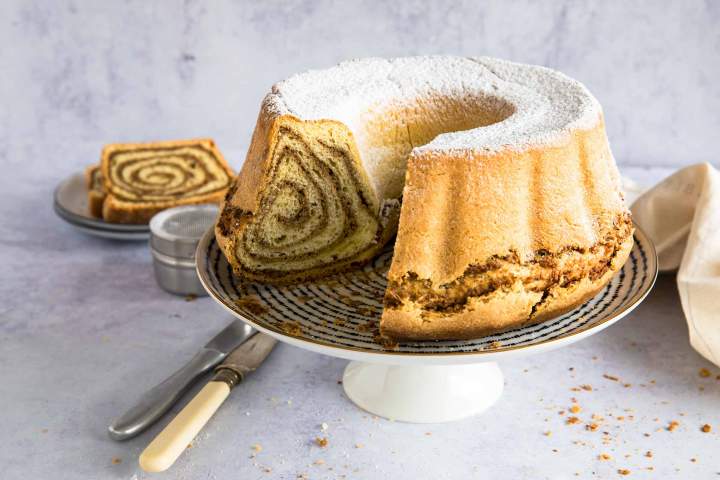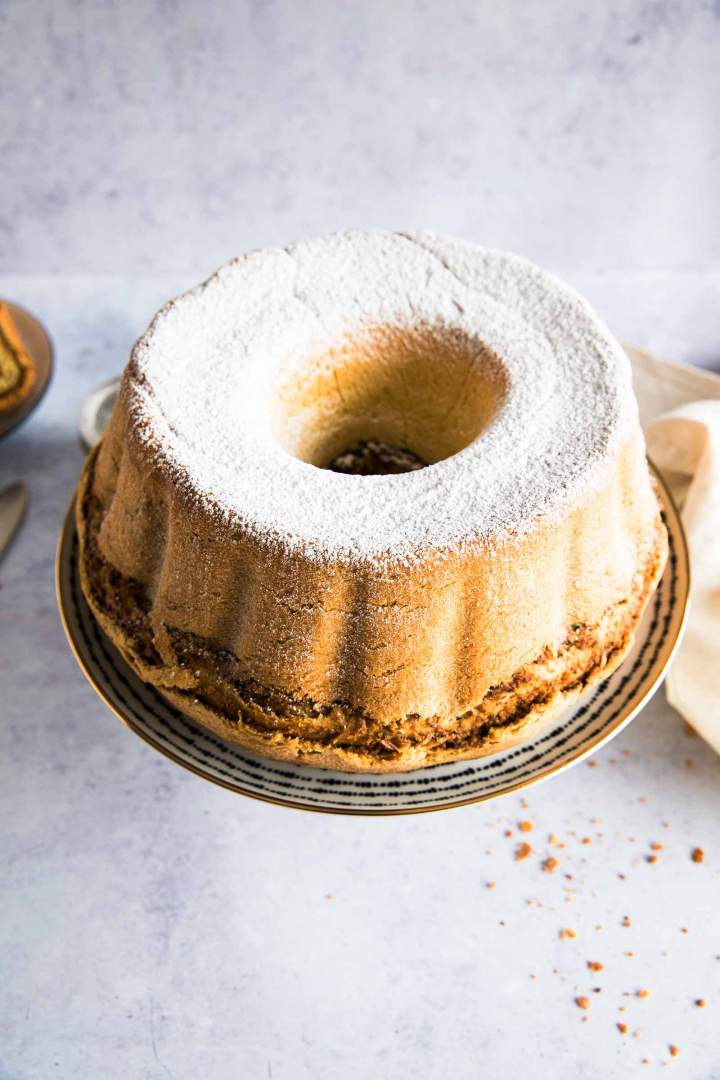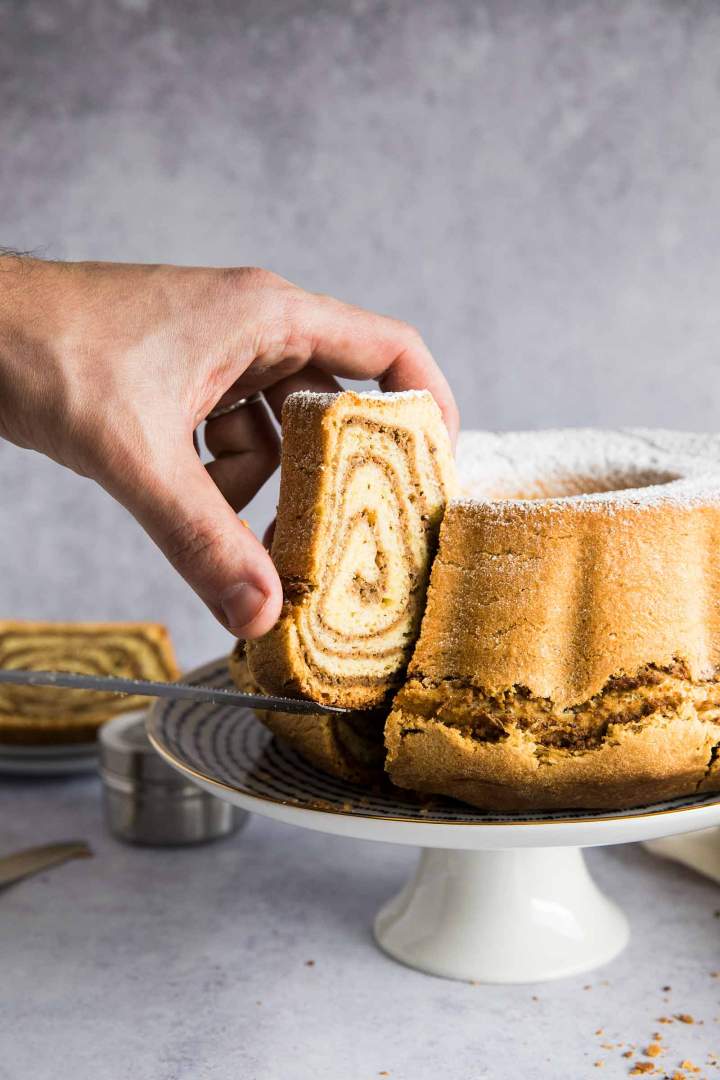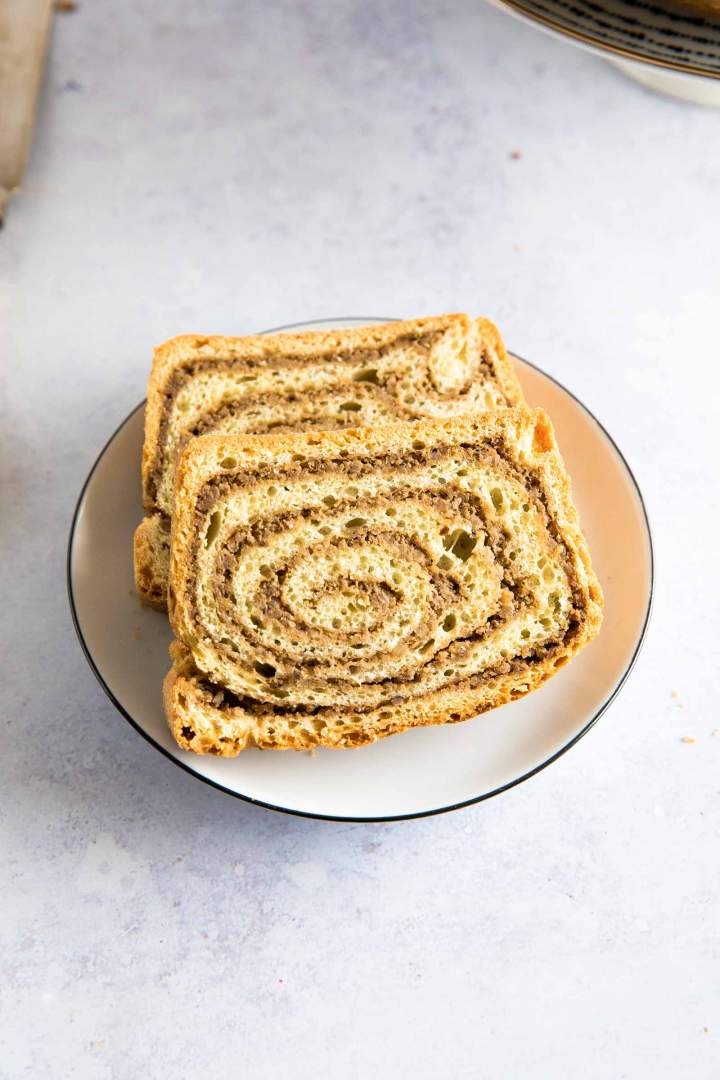METHOD
-
prepare the pans
We traditionally bake potica in a cake pan called "Poticnik". It's similar to a bundt cake pan, so you can use that or use a loaf pan. Grease with butter or lard and set aside.
-
knead
In a small bowl knead together yeast, sugar, and lukewarm milk. Set aside for 10 minutes for the yeast to grow. In a large bowl combine all-purpose flour, yeast mixture, and egg yolks. Knead for a minute, then add melted butter and salt. Knead for about 10 minutes by hand or use an electric mixer and knead until the dough is nice, soft and elastic, for about 5 minutes (using a mixer). Cover with cling film and set aside for about 50 - 60 minutes or until doubled in size.
TipIf the dough appears to be stiff and not elastic at all, add up to 2 tbsp of milk into the mixture. You can also substitute 1/3 of the butter with lard. -
walnut filling
Put the walnuts in a bowl of a food processor and pulse for a few seconds at a time until the walnuts are fine. Transfer to a large bowl. In a saucepan combine heavy cream, floral honey, sugar, butter, rum (optionally), lemon zest and ground cinnamon. Place over medium-high heat, bring to a boil, then pour over the walnuts in a bowl. Stir to combine to get a nice walnut filling. Set aside for the mixture to cool to room temperature. In a separate bowl beat the egg whites with sugar to get stiff peaks. Fold the egg whites into the walnut mixture and stir to combine. The walnut filling mixture should be light, yet stirred well.
TipIf the walnut filling seems too liquidy, add a tsp of breadcrumbs. If the filling seems too dry, add 1 tsp of heavy cream. -
Preparation and Rolling (the classic way)
Preheat your oven to 190 °C / 375 °F. Generously dust your working area with flour. Roll the dough into a 40 cm x 35 cm / 16-inches x 13.5-inches rectangle, thickness 0.5 cm or 0.2-inch. Using an offset spatula, spread the walnut filling in an even layer over the dough. Starting at the shorter edge nearest you, tightly roll up into a tight log. Brush off any excess flour. Transfer the potica roll to the prepared pan so that the seam is looking upward. Make sure that the ends of the log are tightly pressed together or the potica won’t be as pretty and the filling will spread out while baking.
TipIf you decided to cut off the excess dough on the edges, you can bake it separately on a baking sheet. The length of the log must be double the length of the round bundt cake pan. -
proofing (classic way)
Cover the potica with a towel or cling film and let stand at room temperature until doubled in size, about 45 - 55 minutes.
-
overnight proofing
If you want to proof the potica overnight, you first need to leave out the first bulk proofing. Once you knead the dough, leave it to rest at your working surface for about 15 minutes, then roll the dough into a rectangle and spread the walnut filling over the dough. Roll, transfer to your prepared pan. Cover with cling film or towel and place in the fridge to proof for about 8 - 12 hours. Then, place the cold potica into your preheated oven to bake.
-
bake and serve
Using a brush, gently brush the potica with lukewarm milk. Use a skewer to poke holes all over the top of the potica all the way through to prevent air bubbles from forming and separating the filling from the dough. Transfer the potica to the preheated oven. Bake for 45 minutes at 180 °C / 355 °F. Then lower the heat to 160 °C / 320 °F and continue to bake for 20 - 25 minutes or until the nut roll is puffed and golden brown. Let cool slightly, for about 5 minutes, then invert onto a wire rack and remove the pan. Leave the potica to cool, then sprinkle with icing sugar and serve. Enjoy.
TipIf you are baking potica in a convection oven the baking time is slightly different. First, bake for 45 minutes at 165 °C / 330 °F, then reduce the heat to 140 °C / 285 °F and continue to bake for 20 - 25 minutes.















